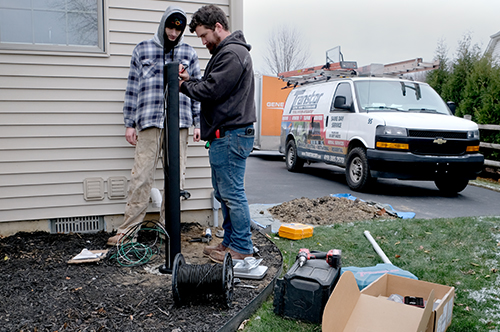EV perceptions: Job loss, price tags, battery charger installation
TOLEDO – There is a perception that transitioning to EVs will cause job loss. This is a complex issue, and total job loss or gain has yet to be determined.
Significant upheaval and job loss have recently occurred in the automobile industry worldwide. In Toledo, Stellantis will be laying off 1,100 workers, and Mobis will release 210 employees in January 2025. Industry experts state that the reasons for the downturn are Chinese competition, economic pressures, less demand for certain models and buyers shifting to EVs.
According to Tim Levin of Business Insider, another reason for job loss is that producing EVs requires 30 percent fewer workers than manufacturing gas-powered vehicles since EVs have fewer parts.
Recent research does not support this position. University of Michigan researchers, led by Andrew Weng, found higher labor demands at U.S. plants producing only electric vehicles. Early production stages show that EV labor needs are ten times greater than traditional vehicle assembly. Shifting to EV production requires adopting new tools and methods, creating a challenging learning curve and needing more workers early on.
At one plant, labor demand and job numbers remained three times higher even after a decade of the beginning of EV production. The study suggests it could take over 15 years for labor requirements to be at the same level as traditional assembly processes. Concerns about widespread job losses at EV assembly plants may be premature.
In another area of EV manufacturing, EV battery production is increasing. Reports from the W.E. Upjohn Institute and the Bureau of Labor Statistics estimate up to 310,000 workers will be needed across the lithium-ion battery supply chain. These positions include roles in material sourcing, manufacturing and distribution.
EVs need charging
Charging infrastructure growth could create more than 160,000 jobs by 2032, according to a study released by the International Council on Clean Transportation in January 2024. These jobs would include electrical installation, maintenance, charger assembly and several others.

One of those companies that benefit from EV job creation is Toledo’s Transtar Electric, which offers a range of electrical services, including installing residential and commercial EV chargers. When asked how business was going, Ross Bollin, vice president at Transtar, said he thinks it’s going pretty well, and that “it’s a booming industry.”
While out installing a residential EV charger in Maumee on Dec. 2, Johnathan Heer, a residential electrician/journeyman for Transtar, was asked the same question. “Well, recently, since I got certified in installing these EV chargers, it’s anywhere from two to four chargers a week, and those are anywhere from a half day to a full day of work. That’s at least 50 percent of my job these days,” he said.
“As more people buy electric vehicles, as more companies require their employees to have electric vehicles, it’s just going to keep going up. I mean, we’re probably going to have to get more people at our company certified in order to install them and do more installations as it goes,” Heer said.
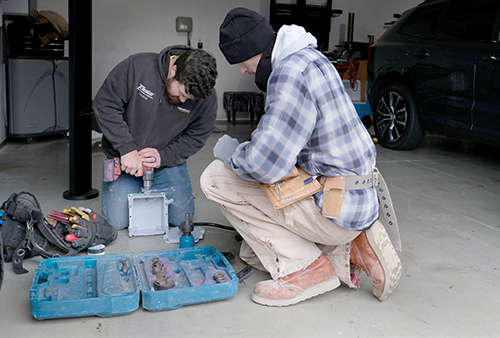
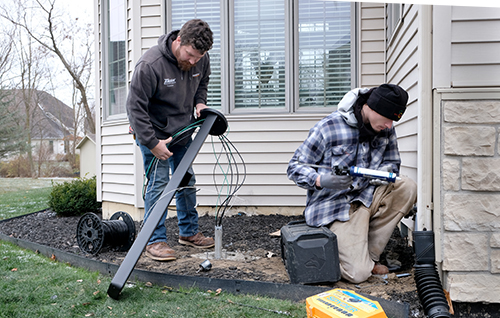
Jacob Myers, an electrical apprentice, who was assisting Heer with the install, said he enjoyed the work and was looking forward to a long career as an electrician.
Bollin did express a concern that some homeowners did not investigate how much installation charges would be prior to ordering the install. In most cases, an EV charger installation will cost between $1,000 and $2,500, but if the electrical equipment is very old or in disrepair it could cost considerably more than that.
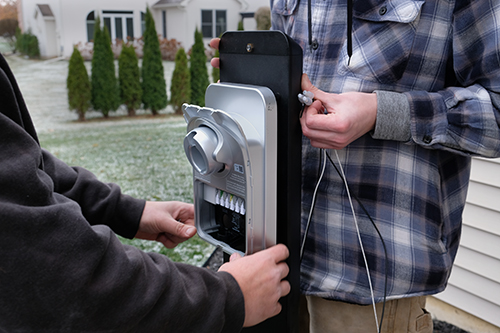
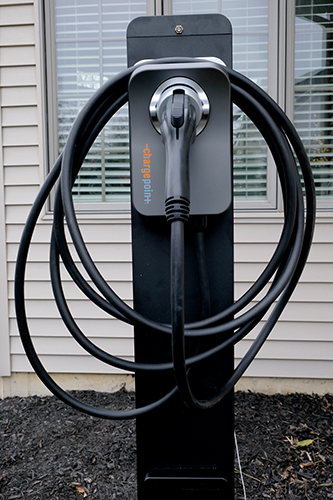
Are Electric Vehicles (EVs) too expensive?
In November 2024, Kelley Blue Book reported the average price of electric cars at $56,902, compared to $48,623 for gas-powered vehicles. To offset this price gap, the federal government offers incentives of up to $7,500 for eligible new electric, plug-in hybrid and fuel-cell vehicles. If you lease an electric car, you might qualify for a $4,000 credit on select models.
A 2018 study reported by the University of Michigan’s Transportation Research Institute showed that operating an electric vehicle costs much less than a gas-powered one. On average, driving an EV in the U.S. costs $485 annually, while gas-powered cars cost $1,117.
The federal Office of Energy Efficiency and Renewable Energy has reported that maintenance for EVs averages $0.06 per mile, compared to $0.10 per mile for gas-powered cars. If you drive 15,000 miles a year, this results in possible savings of about $600 annually.
A 2023 Consumer Reports study concluded that owning an EV can save drivers between $6,000 and $12,000 over the vehicle’s lifespan compared to a similar gas-powered model.
Range and charger anxiety
Two of the main concerns that potential purchasers of EVs have is range and charger availability. How far can they travel on one charge and find a working charger when needed? People are worried about getting stranded.
According to the EPA, the median range for a 2023 EV is 270 miles. This is decreased in cold weather. The range is cut by 20 percent at 32 degrees and 40 percent at 20 degrees. Considering that the average driver in the U.S. drives 37 miles a day (Department of Transportation), range anxiety, in most instances, may not be warranted.
Charger anxiety is another matter. In a 2024 study about 19 percent of drivers faced issues with broken or offline chargers (J.D. Power, press release, August 14, 2024).
Travis Chapin, from Bowling Green, had some “charger anxiety” on a recent trip back from Chicago.
“I pulled into Elkhart, Ind., probably one o’clock in the morning, to charge for 40 minutes and be on the road be home. As it turned out, that would not work,” he recalled.
“I decided that my best option was to do the Meijer’s store in Angola. I got there; it seemed to be working. Plugged it in and it said, ‘No way, Jose’ … and my level three wasn’t gonna work. But I had the idea of going to the Kohl’s store down the road, which is a level two, which charges at about 20 miles per hour.
“I went down there, plugged it in, and this is now at two o’clock in the morning. Pulled out my sleeping bag and got two hours sleep, unplugged it, and got home at daybreak.”
LINK: Ohio EV Charger Coverage Gap Planning Map


